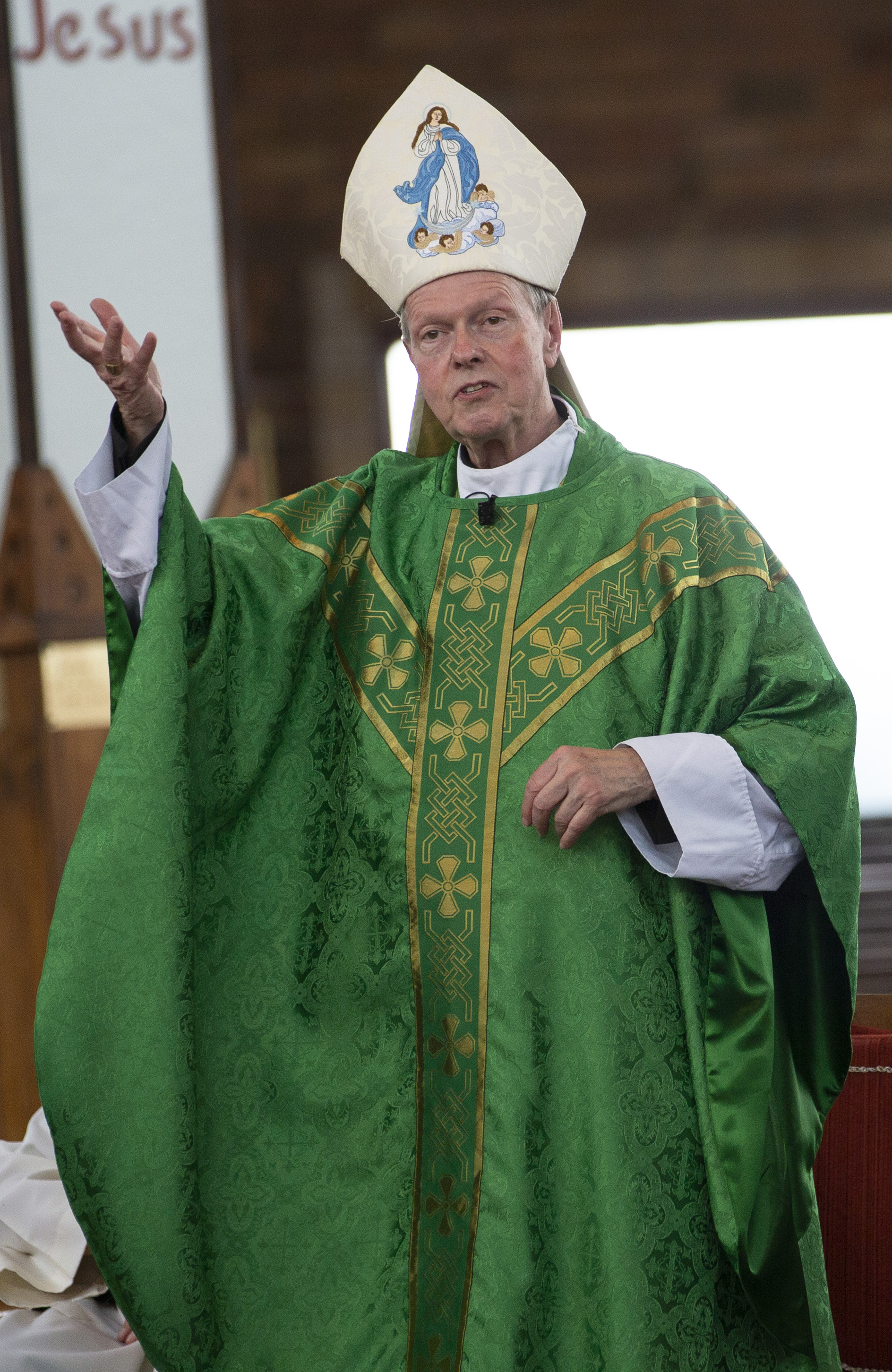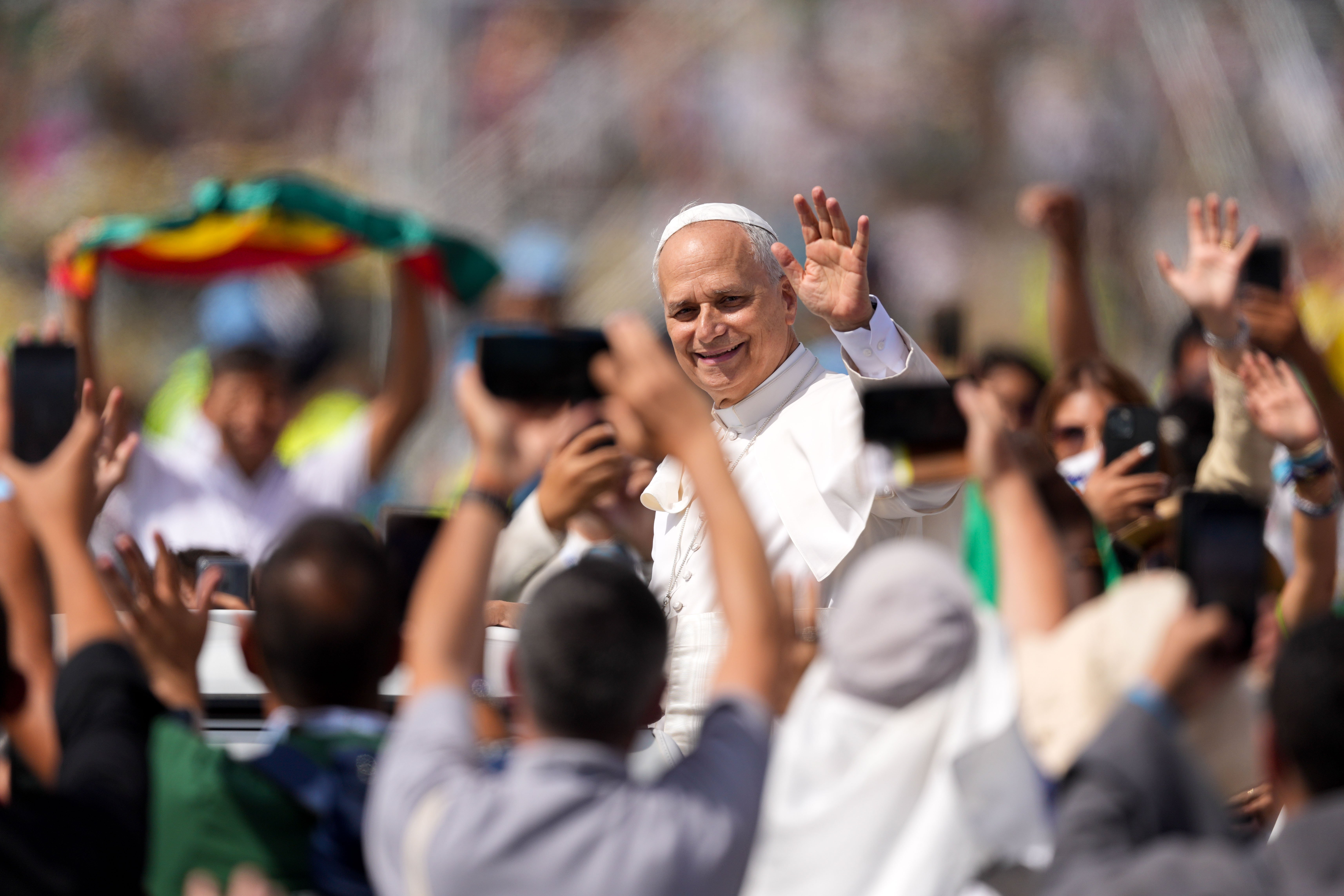April 6, 2018 at 1:53 p.m.
NEW OPTION
Unto dust you shall return: Catholics and green burial
Most Holy Redeemer Cemetery in Niskayuna, operated by Albany Diocesan Cemeteries, has set aside 20,000 square feet of undeveloped space for 260 natural graves, becoming the first Catholic cemetery in New York State to offer "green" burial space.
The cemetery joins about 70 others in the U.S. taking advantage of this rapidly-growing trend (aside from Jewish or Muslim cemeteries, where burial practices often coincide with green burial rules). About 40 of the 70 are strictly green cemeteries; others are hybrids, saving some space for natural burials.
The Niskayuna space abuts a nature preserve. Groundskeepers will mow the area only once a year, so the wildflower seeds planted there will spread. Skipping pesticides, herbicides and fertilizers will promote the growth of shrubs and flowers and attract birds, bees, butterflies and more.
Families will receive a packet of seeds to plant on their first visit to a loved one's grave. The next time they visit, they may already see the fruits of their labor.
"It's kind of symbolic of our belief that there is life after death," remarked Maureen McGuinness, family services manager at Most Holy Redeemer Cemetery.
A Catholic funeral, with all the elements of the Rite of Christian Burial, can go along with a natural burial. The natural burial method simply circumvents the need for burial vaults, metal caskets, and markers or monuments made with bronze - all of which take energy to produce and ship and don't promote natural decomposition, Ms. McGuinness said.
Only simple burial shrouds or biodegradable wooden caskets will be permitted in the preserve, which the cemetery calls Kateri Meadow Natural Burial Preserve, named for Blessed Kateri Tekakwitha, the patroness of ecology and the environment.
Memorials there will be simple, 12-by-6-inch granite blocks supplied by the cemetery with space for names and years only. Cremation and grave decorations will not be permitted.
Proponents of natural burial say it minimizes environmental impact and imitates Jesus' traditional Jewish burial: His body was wrapped in a linen sheet and placed in a tomb dug out of solid rock.
"I think we're doing our little bit in this corner of the world to help the land," Ms. McGuinness said, invoking Catholics' responsibility to be stewards of creation. "This earth was entrusted to us by God and it's our job to care for it."
Natural burial can also be a cheaper option than traditional burial or cremation. Traditional burial at diocesan cemeteries costs between $750 and $2,000, not including the purchase of caskets and vaults from funeral homes or extras like flowers, obituary notices and limousine rentals.
Many traditional funerals cost more than $10,000, according to the Federal Trade Commission's funeral consumer guide.
A grave and marker at Kateri Meadow will cost $1,500, plus an interment fee of $700. A natural burial could still run up a higher bill if the family chooses to have their loved one embalmed or to rent a casket for the wake and funeral.
"It's about what people want and what [the deceased's] life was like," Ms. McGuinness said.
A burial shroud from the San Francisco-based Kinkaraco company costs between $299 and $499, said Esmerelda Kent, founder and CEO. She does a lot of her business with ordained Mennonites, Buddhists, Quakers and Catholics, among others.
Reaction to the new space in Niskayuna has ranged from support to disdain, Ms. McGuinness said. Many area residents can't imagine flowers growing above their grave, for example.
Others falsely maintain that embalming and vaults are traditional, but those modern methods actually originated with the Civil War.
"This one small section would allow people to be buried the way their ancestors were buried," Ms. McGuinness said, adding that Catholics and parishes need to be educated on green burials, just as they were with cremation: "Any kind of change takes time."
Local clergy and religious have expressed interest in natural plots; some people have already purchased natural graves pre-need. An unintended benefit of the space is allowing Catholic/Jewish couples to be buried together.
Sister Kathleen Pritty, RSM, supports natural burials and hopes they will expand to parish cemeteries. She coordinates funerals for her religious community, the Sisters of Mercy, at Holy Sepulchre Cemetery at the Parish of St. John the Evangelist and St. Joseph in Rensselaer. About 325 sisters are buried there.
Sister Kathleen said it's not natural to prevent the deceased from decaying: "What they use to embalm people is carcinogenic. It's a terrible thing to make you look alive when you're dead. You interfere with the natural process: You go back into the earth and, once again, you're part of the universe.
"The point is to go back to what you're made of - calcium and carbon and what have you. You become part of the process of the circle of life."[[In-content Ad]]
MORE NEWS STORIES
SOCIAL MEDIA
OSV NEWS
- Pope pays tribute to Cardinal Karlic, who helped draft catechism
- Works of mercy are best way to invest what God gave you, pope says
- Pope prays world leaders recognize their responsibility for peace
- Washington Roundup: Birthright citizenship order blocked; military plans ordered for cartels
- Cordoba cathedral fire quickly extinguished despite dramatic flames
- Federal judge in Maryland blocks Trump birthright citizenship order
- Nagasaki monastery, Pope’s message to KofC, Blessed Pier Giorgio Frassati | Week in Review
- Pope Leo tops Gallup world leader poll, across party lines
- Green card policy change may leave immigrants seeking legal status vulnerable to deportation
- Apostolates in Minnesota archdiocese focus on missionary discipleship at historic meeting









Comments:
You must login to comment.